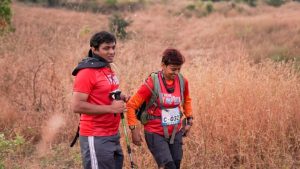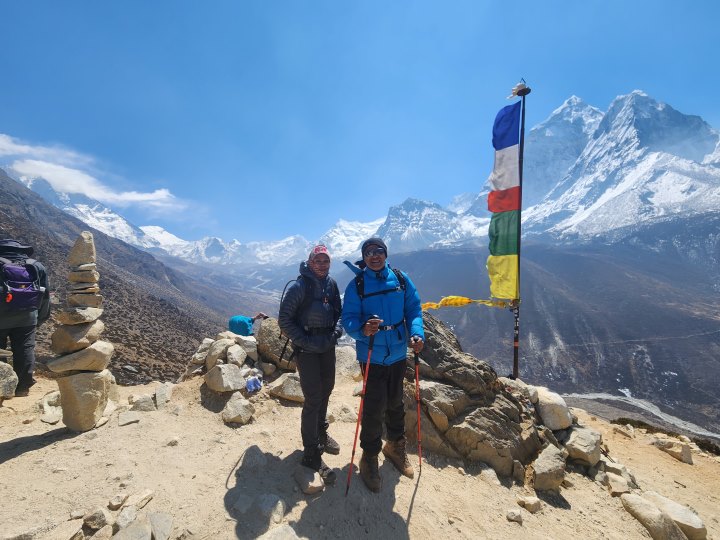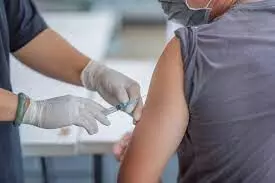By Anusha Subramanian
Recently, I was on a trek with a group of seven women, and among them was Vandana Kulkarni and her 10-year-old non-verbal autistic child, Vihaan. This was not just a usual weekend trek in the Western Ghats of Maharashtra; it was an inclusive trek.
What unfolded was a remarkable journey of acceptance and empathy. The group embraced the child and his mother with open hearts and minds by adapting to the pace and activities that allowed Vihaan to fully participate in the trek.
A profound level of empathy was demonstrated by the trekkers towards mother and son as they constantly encouraged him and gave him hi-fives. Vihaan also reacted positively when appreciation was directed at him. The trek demonstrated the transformative power of empathy and inclusion—a reminder that when we embrace diversity and extend understanding to those who may experience the world differently, we create spaces where everyone feels valued, accepted and connected.
India is home to over 1.40 billion residents and around 2.2% of this population lives with some form of severe mental or physical disability. In today’s progressive era, where integration and inclusion are emphasized as the gateway towards sustainable development, targeted measures for the health and well-being of persons with disabilities are becoming more indispensable.
People cringe at the thought of having a conversation or a coffee with a person with a disability and I do not blame anybody for this attitude. If one does not grow up, live with, study with, or work with a person with a disability, how is he or she supposed to know how to interact with or communicate with them?
Having said this, it is essential to recognise the efforts being made to address these issues. There are organisations, activists and individuals tirelessly working towards disability rights and inclusion. They advocate for policy changes, raise awareness and fight for equal opportunities. However slow the progress may be, it’s happening.
I feel sports and the outdoors can create a greater awareness among people as they play and interact together.

There is HR Nagendra, a paraplegic yoga therapist who promotes the benefits of yoga for persons with disabilities. There are organizations like the Sarthak Education Trust, Enable India and Planet Able that promote accessible travel. The “Accessible India” campaign demonstrates the positive impact media can have in shaping a more inclusive society where disability is embraced as a natural part of diversity.
However, I find it disheartening to realise that even in the 21st century, India continues to struggle with normalising disability. In the last few years, even as LGBTQ+ issues have come into the mainstream but disability issues and achievements of people with disability seldom find space in the mainstream.
Last I knew, The Hindu was the only newspaper that wrote regularly on disability issues and achievements. Doordarshan is the only news channel that presents news in sign language for the deaf and mute. Wonder why no private news channels ever thought about this. Despite progress in various areas, a significant gap remains when it comes to inclusivity and equal opportunities for individuals with disabilities.
To truly normalise disability in India, we need a collective effort. It requires changes in societal attitudes, improvements in infrastructure and accessibility, inclusive educational and employment opportunities and effective implementation of disability rights legislation. It also necessitates inclusive media representation, awareness campaigns and the amplification of disabled voices.
While the road ahead may be challenging, the goal of normalising disability is not an unattainable dream. By working together as a society and ensuring equal opportunities we can create an inclusive India where individuals with disabilities are valued, respected and empowered to reach their full potential.
The media has a significant role to play in normalising disability inclusion in day-to-day affairs. Here are some ways in which media can make a substantial impact:
Accurate and Diverse Representation
The media must showcase a wide range of disabilities and accurately represent the challenges and triumphs faced by individuals. It is essential to move beyond one-dimensional portrayals and highlight diverse disability experiences. For instance, popular TV shows like “Special” and “Speechless” have gained acclaim for authentically representing the lives of persons with disabilities, shedding light on their strengths, aspirations and everyday struggles.
Sensitivity and Avoidance of Stereotypes
Media should prioritise sensitivity when depicting disability, avoiding harmful stereotypes and tropes that perpetuate misconceptions. Instead, narratives should focus on the capabilities, talents and unique perspectives of individuals with disabilities. The film “Margarita with a Straw” beautifully portrays the life of a young woman with cerebral palsy, highlighting her journey of self-discovery and challenging societal expectations.
Inclusive Casting and Employment
Media organisations and filmmakers can lead by example by actively casting able-bodied actors as well as actors with disabilities in roles. This practice promotes inclusivity, provides opportunities for talented individuals with disabilities and helps break down barriers. The film “Pihu” features a child actor with a disability, showing that disability should not be a limiting factor in pursuing a career in the entertainment industry.
Collaborative Storytelling
Engaging individuals with disabilities in the storytelling process is crucial to ensuring authentic representation. Collaborating with disability advocacy groups, consultants and disabled individuals themselves can bring valuable insights and promote more accurate narratives. The film “Hichki” worked closely with a disability consultant to portray a character with Tourette’s syndrome, effectively raising awareness about the condition and empowering viewers.
Educational Content and Awareness Campaigns
Integrating disability-focused storylines, documentaries and public service announcements can help dispel myths, promote understanding and create empathy. The campaign “Accessible India” by the Ministry of Social Justice and Empowerment aimed to sensitise people towards accessibility issues and promote a more inclusive society. The need of the hour is to normalize disability, which will contribute to a more equitable and inclusive India for everyone.
To effectively normalize disability in India, media outlets must strive for authentic representation by showcasing individuals with disabilities as multidimensional and capable individuals. Inclusive storytelling should highlight their achievements, struggles, and everyday experiences. Collaboration with disability advocacy groups and consultation with individuals with disabilities are crucial to ensuring a respectful and accurate portrayal. Further, media platforms should prioritize accessibility, such as providing closed captions and audio descriptions, to ensure equal access to content.
By embracing their responsibility to challenge ableism and promote inclusivity, the Indian media can help reshape societal attitudes, foster empathy, and create a culture that values the rights and abilities of all individuals, regardless of disability. We need to collectively strive towards amplifying these efforts and create a media landscape that reflects the richness and complexity of the disabled community, fostering acceptance, inclusion and equality for all, leading to a more equitable and inclusive India for everyone.




















